POSTCARDS FROM KARUN
Over the past decade, the Karun river has become saltier, causing the palm grove to dry up. The locals value these trees highly and even refer to them as Nafar, the Persian word for “person.”
Unfortunately, drought and dam construction have upset the balance between the sea and the river, causing the water to become salty. As a result, the lands irrigated with this river’s water have turned into salt marshes. The destruction of the palm groves has caused poverty and forced locals to move away, having lost their source of income.
POSTCARDS FROM KARUN
MORTEZA SOORANI
1 • The Karun Newspaper, #4251, July 21, 2018.

This is Alimardaan, a 53-year-old folk instrument player who comes to rehearse by the riverside. He told me that when he was a teenager he used to come here with his brother, to swim and have fun, but one day the current pulled his brother away from the shore and drowned him.
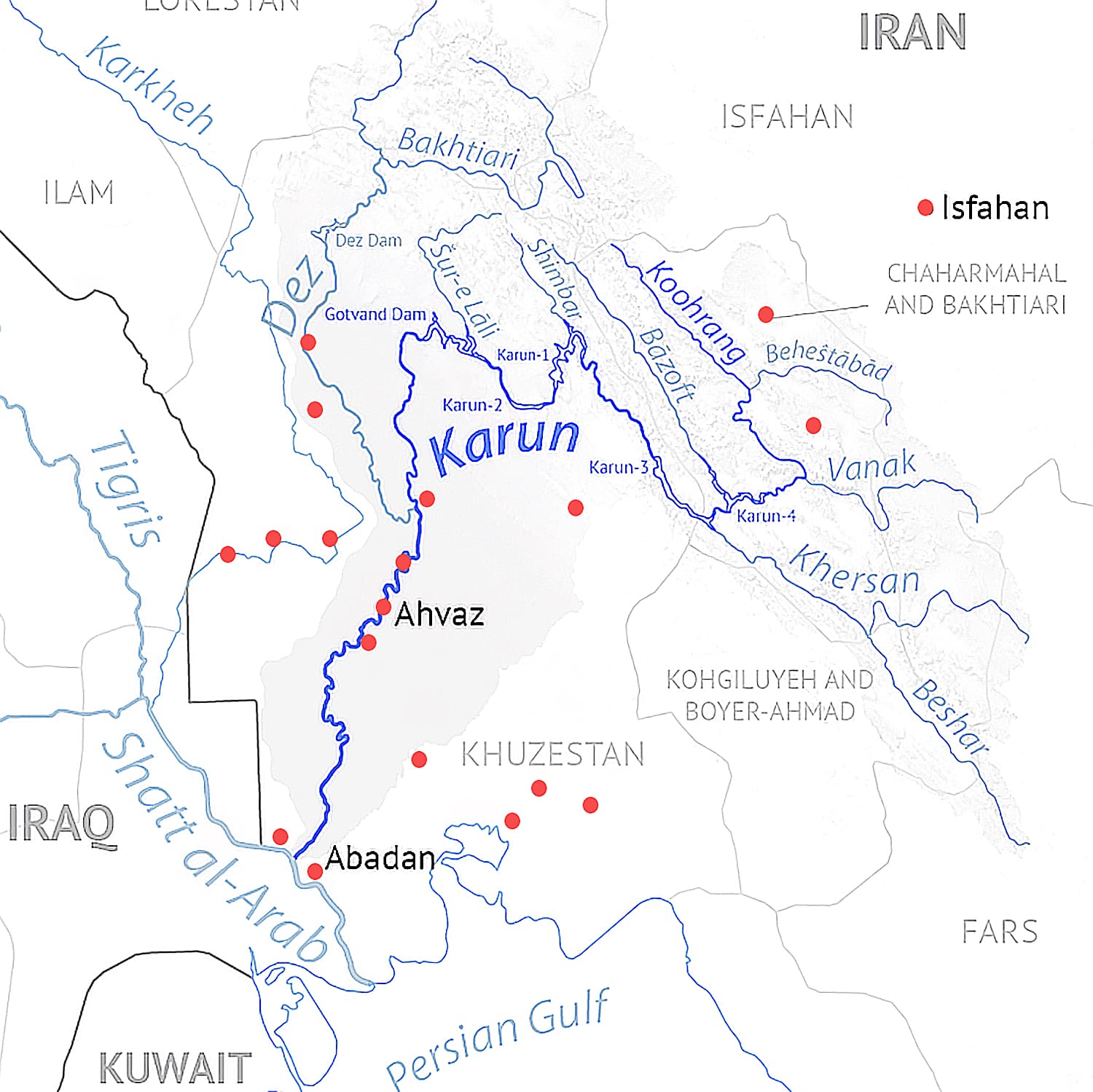
Here is an image of the map of the Karun river. The red dots on the map indicate the cities where protests took place over river water pollution and the lack of sufficient drinking water during the summer of 2021. These protests lasted for one month, during which 14 protesters were killed by government forces and thousands were brutally arrested.
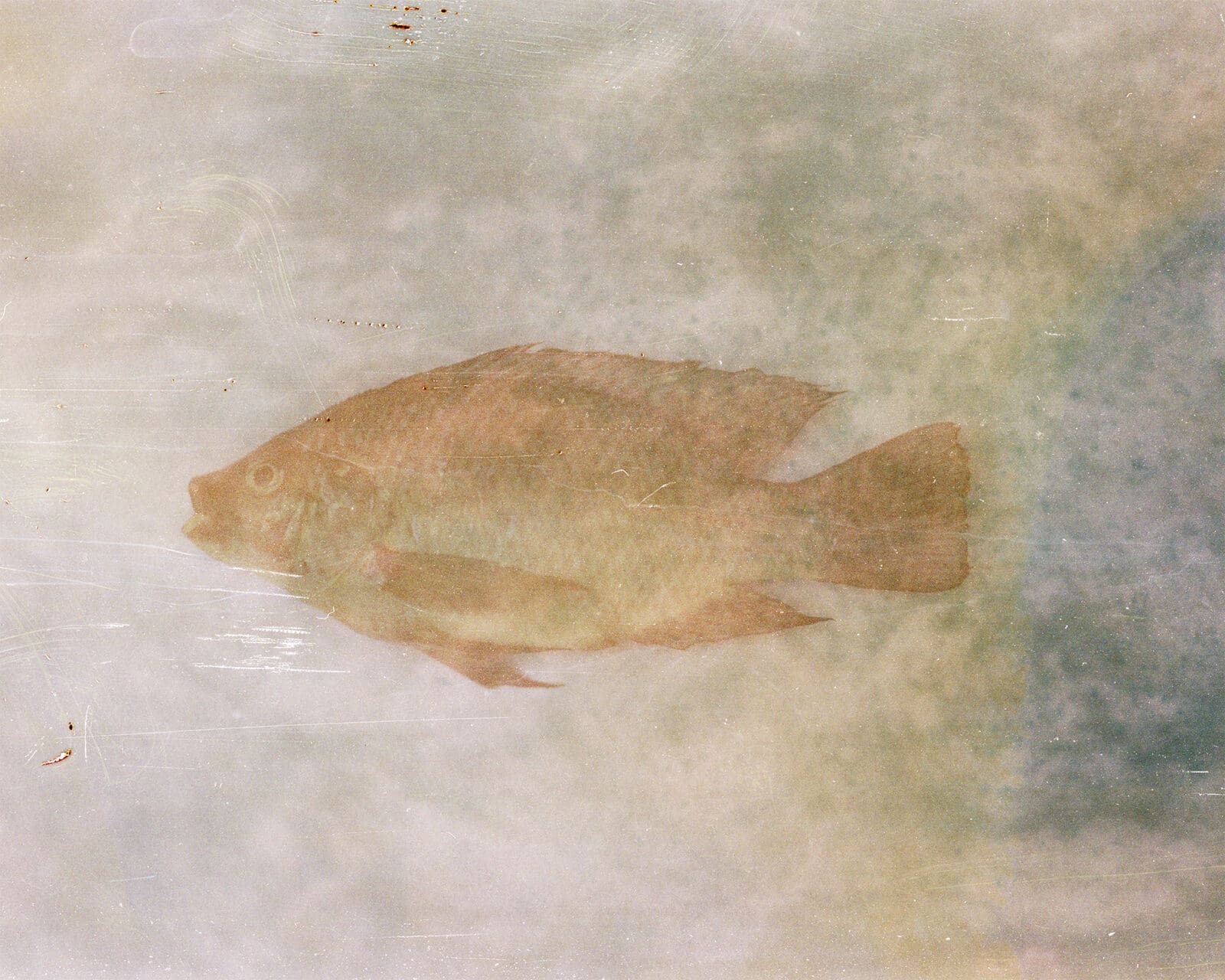
In the native language, tilapia fish are called shānak. This fish was first seen in the Karun river in 2012. Shānak feed on the food and eggs of other fishes and hinders their evolution, making it a threat to other local fish species. The origin of this fish in the Karun river is still unknown.
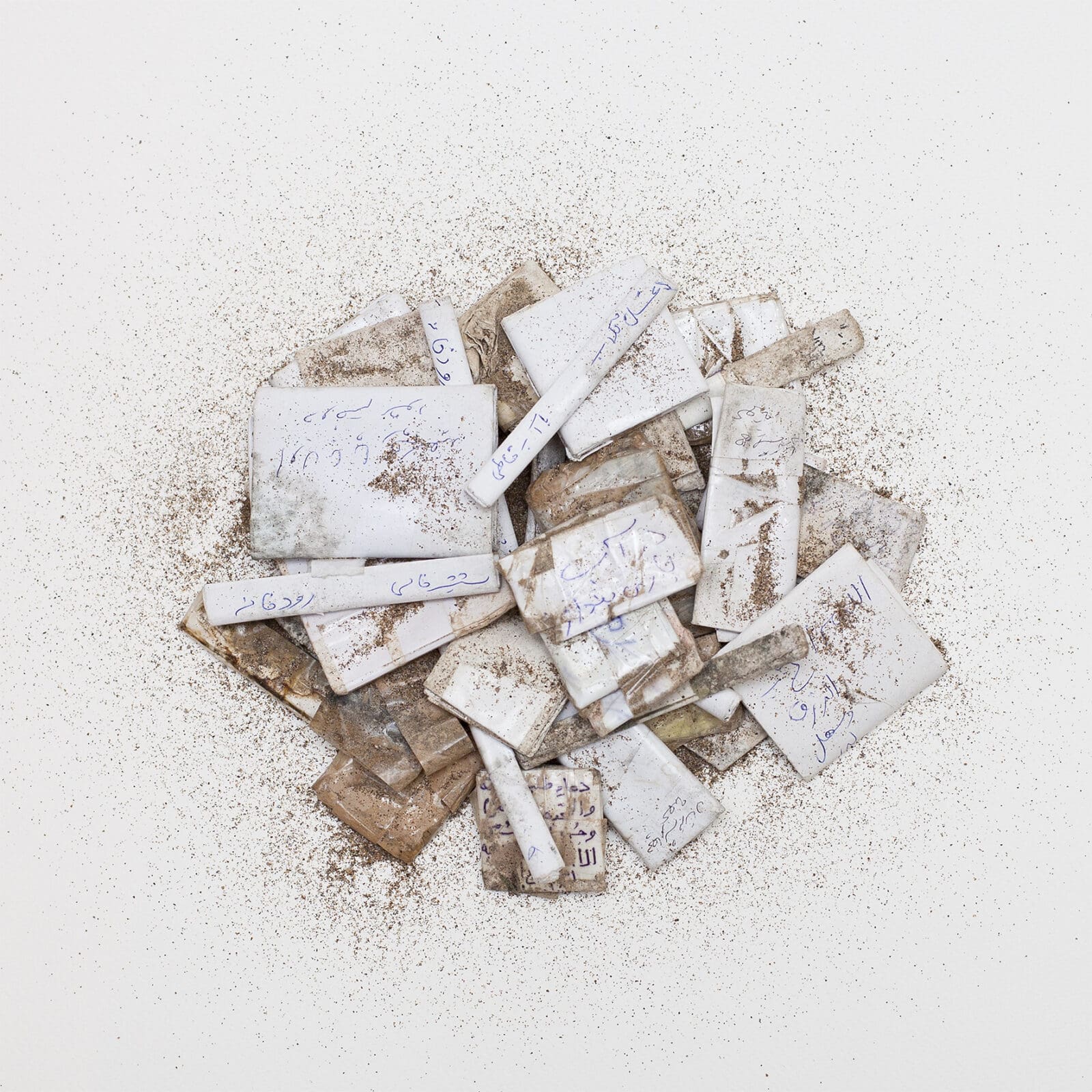
While exploring the riverside, I found many old Arabic talismans inscribed on paper by Indigenous
people. They had been thrown into the water to wash away their misery and bring them happiness. Unfortunately, due to the river’s shallow depth, the talismans remained on the dry riverbed. It appeared that the river could not grant their wishes, and instead their prayers were being returned to them.
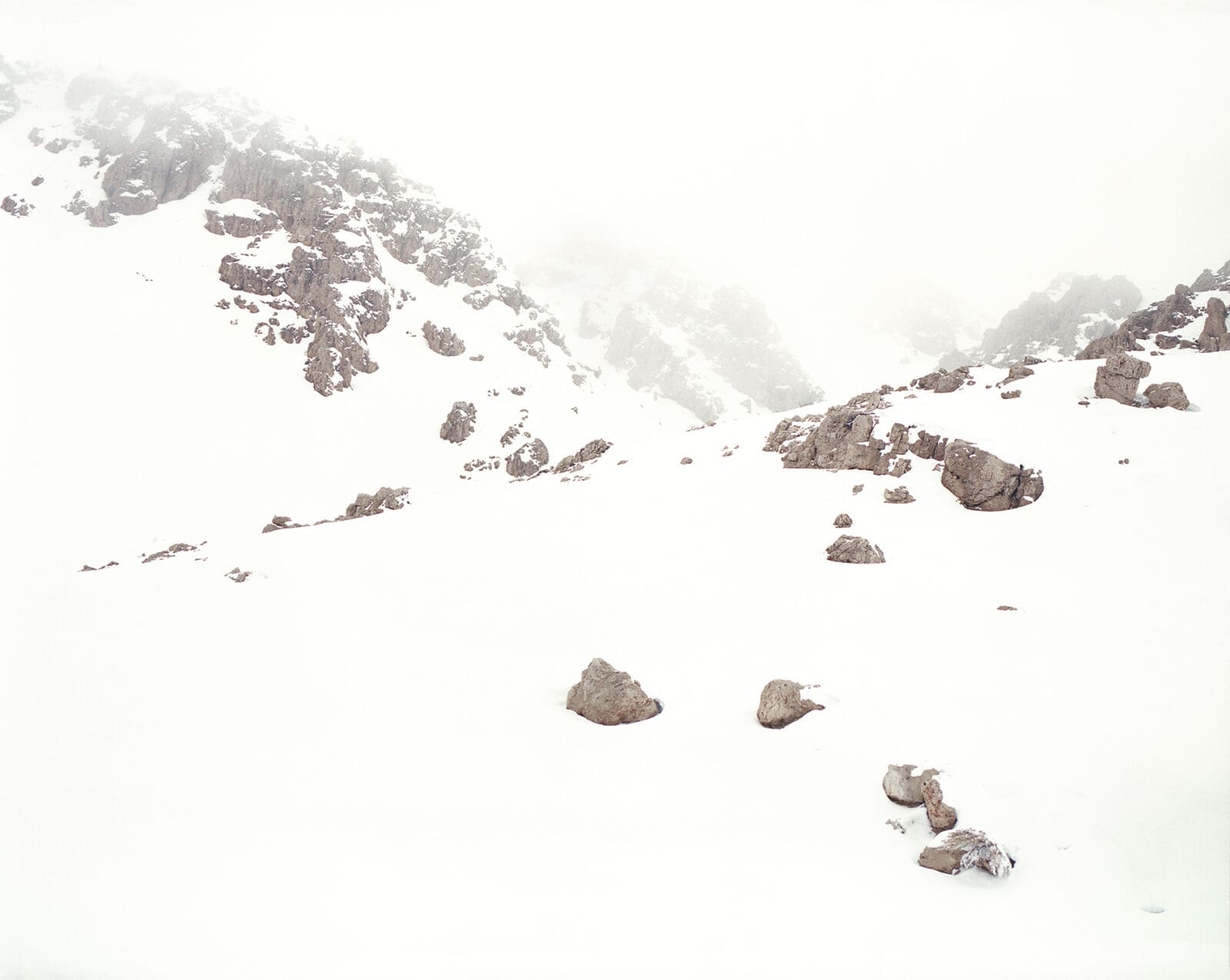
Rain and snowfall from the Zagros mountain range supplies the water to river Karun. The river used to provide ten percent of Iran’s water supply, but due to climate change the past ten years saw less rainfall and shorter winters, which caused a drought.
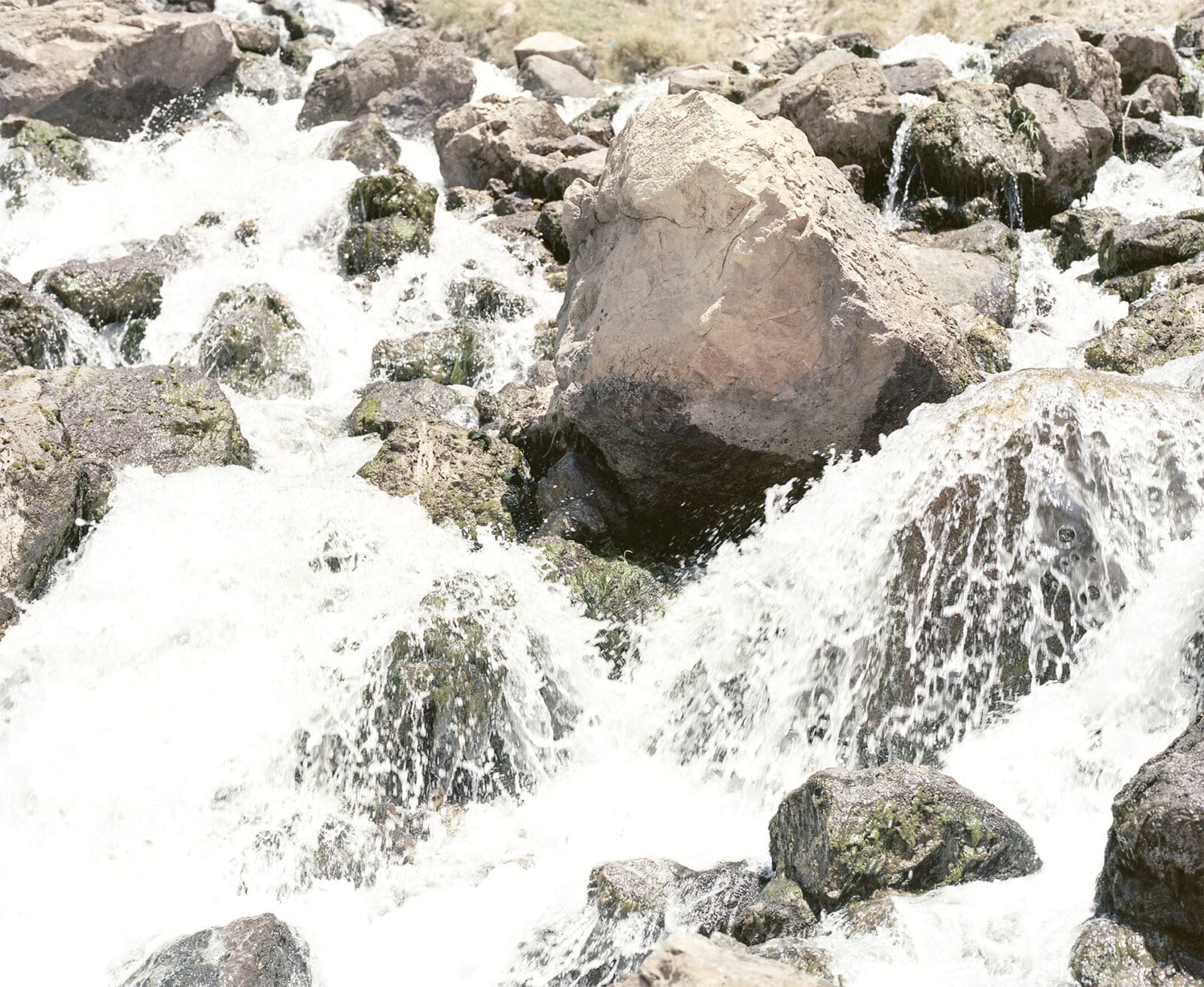
The Sardāb spring is one of the most bountiful springs in the province of Chaharmahal and Bakhtiari. The melting snowpacks on the Zagros seep into the mountain’s rocky heart and later reemerge in the springs as crystal clear water.
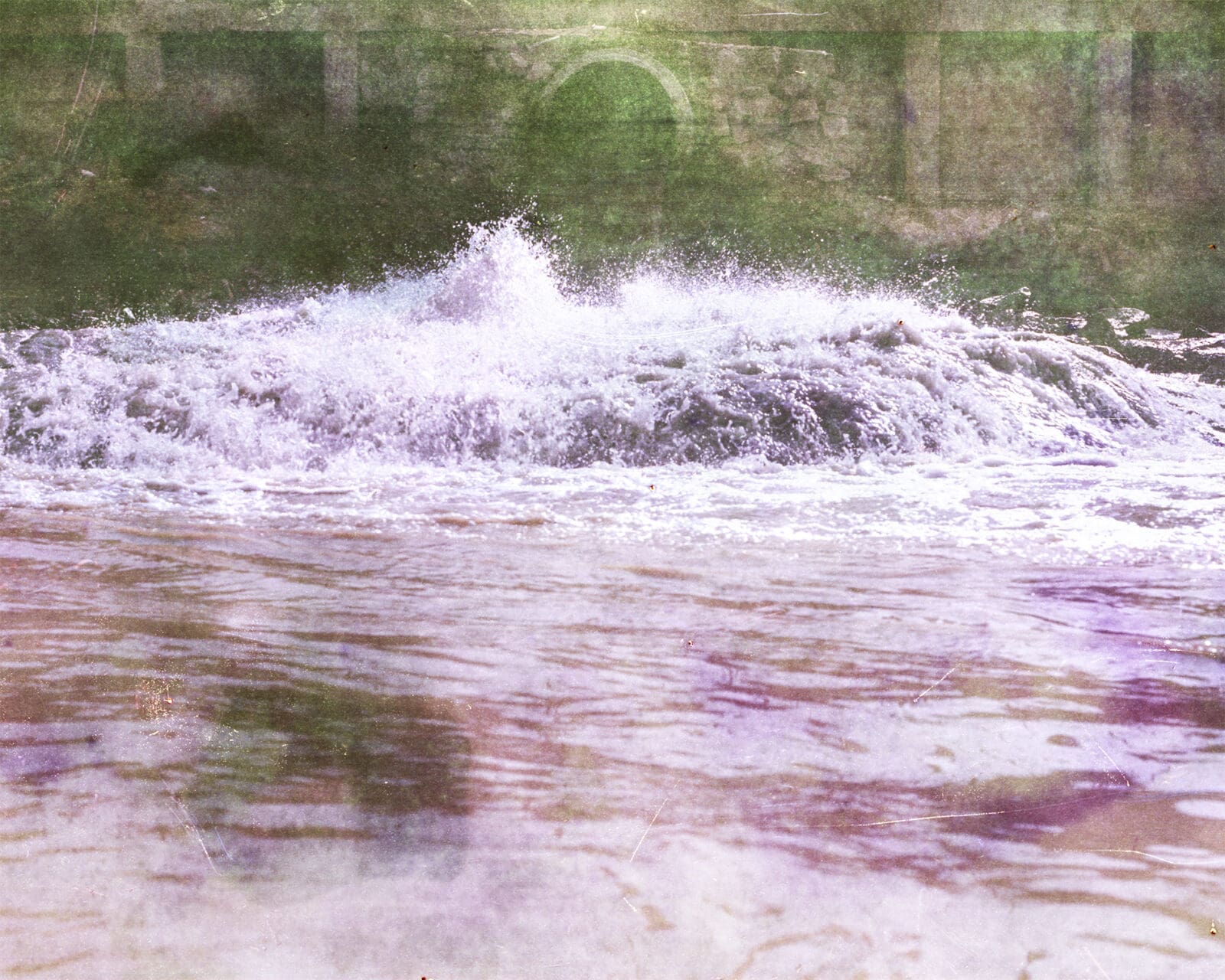
In the city of Ahvaz there is sewage discharge at 13 different locations along the Karun river. The shallow waters cannot digest the large volumes of odorous and septic wastes anymore.
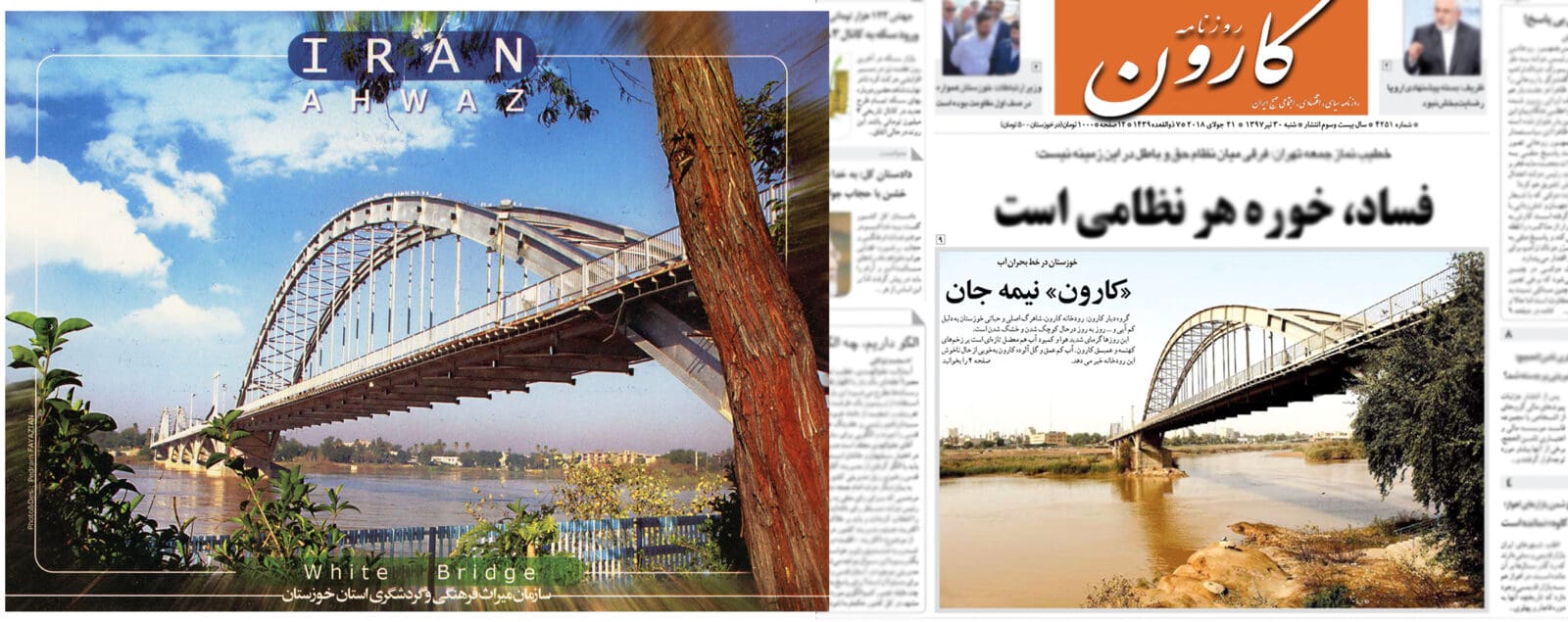
A local newspaper, Karun, featured news and photos about the Karun river. I collected and archived these documents to better understand the river’s current state. The postcard on the left shows “The White Bridge” (Pol-e-Sefid) over the Karun River in Ahvaz. Built in 1936, it is an iconic feature of this industrial city. On the right is an image of the Karun newspaper with the headline “Half-Dead Karun.”1
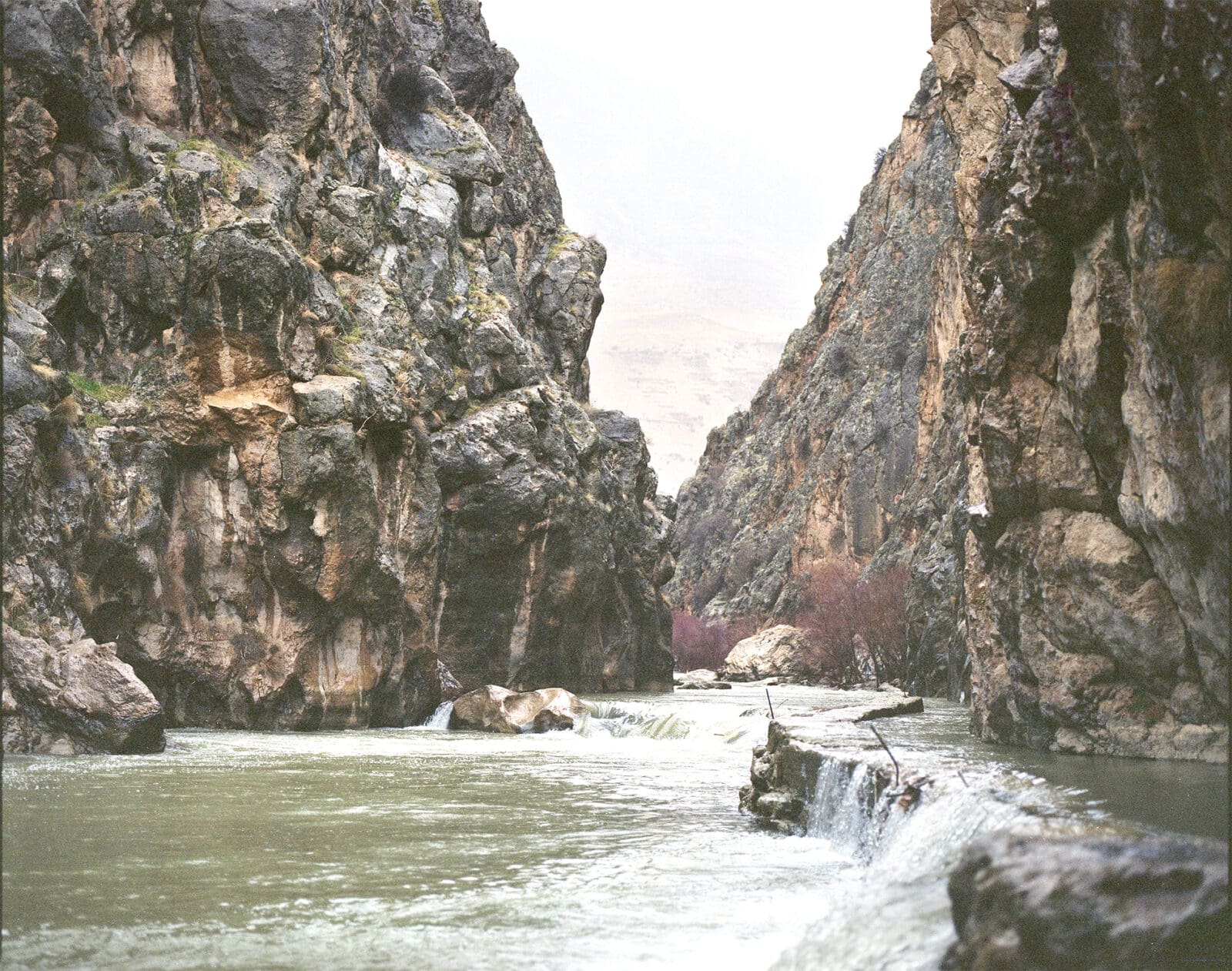
The Behesh-Abad water conveyance project is one of the most contentious projects in the region, and Indigenous people and activists are demanding an end to it. This tributary is one of the most affluent streams of the Karun river. It originates from the Zard-Kuh mountain and leads into Karun. The plan is to transfer the water from this tributary and divert it to Isfahan, Yazd, and Kerman for industrial and agricultural use.
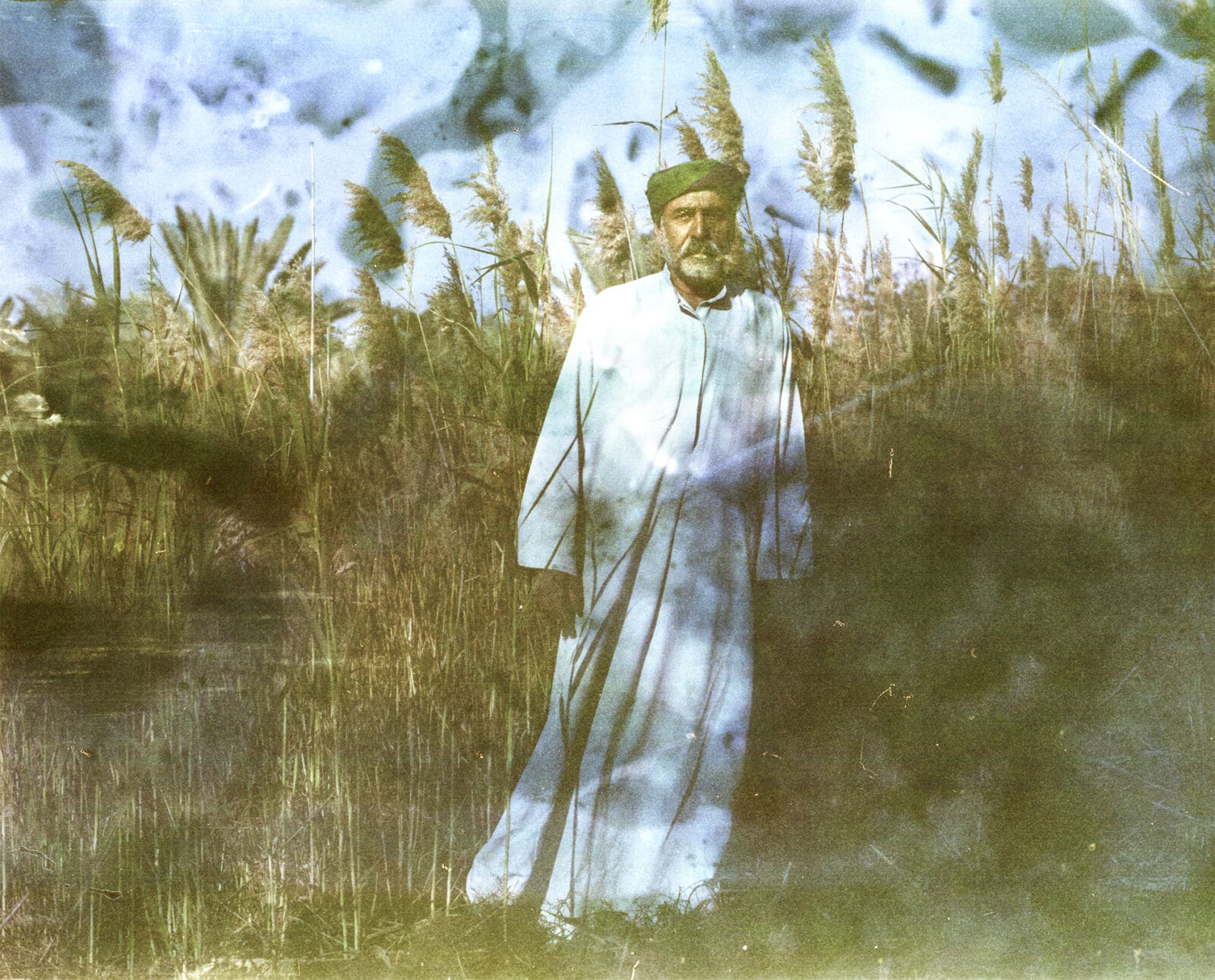
56-year-old Abu Ahmad lives in Hojrieh village with his wife. His children have moved to other cities to find jobs. He used to work as a date manufacturer in the Arvand Zone. His palm grove once had 400 palm trees but they dried up due to the salinisation of Karun’s freshwater. He said, “My palms were like my own children to me. I planted them myself when I was young. One day, the water turned into brine and they suddenly died, standing up.”